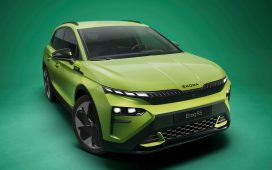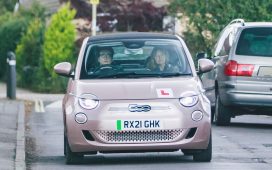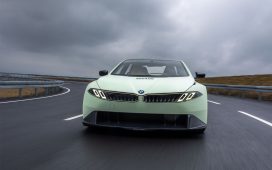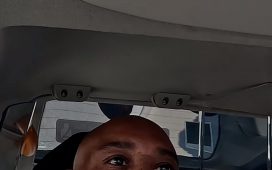Experts expect that consumers and dealers will still have to parse the federal guidance to figure out which cars are eligible — and some automakers are scrambling to develop technology that will assist customers with their questions.
The uncertain state of the subsidy program has complicated what the White House hoped would be a rapid transition to electric cars and trucks. The administration faces potential political blowback from consumers if it takes years to fully expand the EV tax credit program as advocates of the Inflation Reduction Act had envisioned.
“It’s very confusing. That’s one of the biggest problems with this. Do you lease, or do you buy? What does it cost? Are you even eligible?” said Michelle Krebs a Detroit-based analyst for Cox Automotive, an industry services and technology provider. “Who is going to educate everyone on that? Even dealers are confused.”
The conundrum stems from how the electric vehicle provisions were crafted in last year’s law, which dedicated billions of dollars to transitioning America’s auto sector. Biden’s climate goals heavily depend on reducing carbon emissions from transportation, the nation’s largest source of planet-warming pollution.
But largely because of demands sought by Sen. Joe Manchin III (D-W.Va.), the consumer tax credits in the law also sought to boost U.S. supply chains for EVs and batteries, limiting the full tax credit to vehicles whose components are largely sourced in North America. Geopolitical rival China controls much of the world’s electric vehicle supply chain.
Manchin’s demands meant that most of the models currently on the market will not be eligible for the subsidies. Many automakers have howled that they’ve lacked time to prepare.
Automakers and analysts said they expect the law’s provisions to force deep cuts to the nearly 40 vehicles now eligible for tax breaks — or to slash in half the credit many buyers would get — for the next year and maybe beyond.
Industry and administration officials expect the blow will be softened if consumers can take advantage of provisions in the law that allow those who lease vehicles to take the full tax credit for now even if the cars aren’t primarily sourced in North America.
Administration officials say they are confident they can balance priorities and create rules in line with the law that make EVs cheaper for most drivers while also breaking China’s tight hold on the EV supply chain. But they acknowledge it won’t be easy.
“In the near term, auto companies are kind of scrambling to meet the terms,” White House senior adviser John D. Podesta said Monday at a conference organized by Securing America’s Future Energy, or SAFE, an advocacy group for energy security. “We’re optimistic, but there’s a lot of work to do. … It’s complicated.”
Red flags were waved early
Many of the uncertainties trace directly back to the law’s creation last year.
With a narrowly divided Congress, Democrats had to have a yes vote from Manchin, a vocal advocate for oil and mining interests. Manchin was so opposed to EV subsidies that Democrats avoided serious talks with him about it for months.
To win Manchin’s support, negotiators eventually agreed to limit the credits to electric vehicles with certain percentages of battery components mined, assembled and manufactured in North America. The provisions aimed to address Manchin’s fears that China’s current dominance of mineral processing and EV-battery manufacturing would leave the United States even more reliant on China than it is on the world’s oil exporters today.
That tension entangled the last days of negotiations, when there were very few people in the room. Some of the top tax-law experts among Democratic Senate staff were not involved in drafting the final language — a closely held and tense process between aides to Manchin and to Senate Majority Leader Charles E. Schumer (D-N.Y.), said current and former Senate Democratic aides who spoke on the condition of anonymity because they were not authorized to comment publicly.
The agreement Congress passed and Biden signed in August kept the $7,500 credit, but with limits that split it into two parts: Consumers can get a $3,750 credit if the EV has a battery containing at least 40 percent critical minerals from the United States or a country with which the United States has a free-trade agreement. They can receive another $3,750 credit if at least 50 percent of the battery’s components were assembled and manufactured in North America.
But the industry’s U.S. supply chain for those materials is so weak right now that many EVs may not qualify. Industry leaders say it is impossible to know the vehicles affected until the Treasury Department details how the program will work and each company reports to the IRS.
“It’s likely fewer cars will likely qualify immediately for the full credit,” said John Bozzella, leader of the Alliance for Automotive Innovation, the largest auto industry trade group in Washington. “And since companies will report directly to the IRS, we probably won’t know right away what is happening in the marketplace as a result.”
To aid potential customers, some automakers are turning to new tech. General Motors, for example, has a cellphone app that allows potential customers to input a vehicle identification number and use it to “decode” how much of the $7,500 credit will apply.
The law also includes new means-testing requirements aimed at benefiting middle-class — as opposed to wealthy — EV buyers. That will require consumers to do some homework before they can figure out what they might pay, analysts and lobbyists said.
“It’s the Sudoku puzzle. You have to get all the legal paperwork and then figure out whether you qualify or not,” said Alex Liegl, chief executive of Tenet, a small firm that seeks to help consumers take advantage of the EV tax credits.
Administration officials say they plan to roll out consumer education partnerships and programs to help after they issue their guidance.
Morass could drive shift to EV leasing
Treasury’s proposal this week could change the way Americans have traditionally acquired their cars and trucks. Its interpretation of the law is expected to allow the full $7,500 credit to go to vehicles that are leased, according to auto industry officials.
The provisions were intended to help speed up EV adoption through companies that have big commercial fleets of cars and trucks — largely leased. But several automakers have advocated for programs in which they or their affiliated dealers would be the buyers, and then pass on the savings to standard retail consumers who take on lease agreements, but with lower lease payments.
Some analysts and lobbyists say leasing could work well for EV consumers who want to swap out cars for better battery life or to take advantage of rapidly improving technology. But in 2022, most EV consumers purchased their electric vehicles; EV leases made up fewer than 15 percent of transactions, according to Liegl.
Many consumers may not immediately be comfortable with leasing as an option. “It will take some education and time,” said Michael Stewart, director of communications for Hyundai Motor America.
As Treasury officials have tried to calibrate these new rules behind the scenes, it has led to public political fights. On several occasions Manchin has accused the administration of betraying the spirit of the law, both on how it might apply the rules for leasers and on whether it was softening the cutoff for eligibility.
Ford, General Motors, Toyota and others advocating for the industry had repeatedly reached out to Manchin to share concerns, with communications going all the way back to when the law was negotiated, according to people familiar with the outreach. It was clear to staffers at the time that the credits would also pose difficulties for Treasury experts.
During negotiations last summer, staffers for the senator and Schumer also spent a lot of time debating the list of countries where 40 percent of the minerals in an EV battery would need to be sourced, said a Senate Democratic aide who spoke on the condition of anonymity because they were not authorized to comment publicly.
Schumer staffers sought to find the broadest possible list of countries that Manchin could accept, while Manchin insisted on a narrower list and ultimately agreed to the list of countries with which the United States has free-trade agreements, the aide said.
The ensuing struggle to influence Treasury’s guidance has already divided the automobile industry. Foreign automakers have been riled by the portions of the Inflation Reduction Act that limit consumers’ ability to use tax cuts to purchase vehicles unless those vehicles are made entirely in the United States.
Stewart, the Hyundai spokesman, said the company is particularly miffed because it has announced plans to invest $10 billion in the United States, including EV and battery manufacturing plants in Georgia that will create 8,100 jobs.
“For the United States to meet its goals for the energy transition, we need to be making EVs affordable and accessible,” Stewart said.
Even General Motors, which largely supports the IRA provisions, will be unable to sell its GMC Hummer because the sticker price is too expensive. GM will, however, be able to get full tax credits for two versions of its Bolt and its Cadillac Lyriq.
Manchin has often been unmoved by industry complaints. The rules need to be tough to create the incentives for companies to build factories or buy mineral and parts from the United States or its close allies rather than from geopolitical rivals, he has said.
“Senator Manchin was crystal clear that the primary goals of the Inflation Reduction Act writ large, and specifically the vehicle tax credits, were energy security and securing our supply manufacturing chains, and that doing so would be a challenge that required the ingenuity America is known for,” Manchin spokeswoman Sam Runyon said.
But he has also acknowledged missteps, especially around trade provisions in the rules. The allowance for cars made in foreign countries with U.S. free-trade agreements, for example, shuts out some key allies, especially European countries such as Germany and France.
In an interview with Bloomberg TV in January, Manchin said he did not know that the United States and the European Union lacked a free-trade agreement when he agreed to these terms.
“I did not realize the E.U. is not a free-trade agreement” nation, Manchin said at the World Economic Forum in Davos, Switzerland, where many European leaders voiced frustration that the incentives in America’s climate law would harm the bloc’s clean-energy industry.











